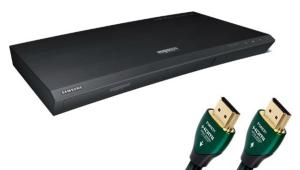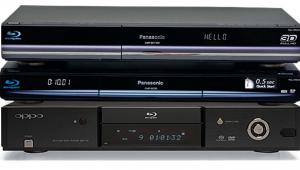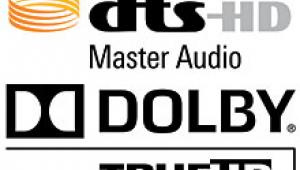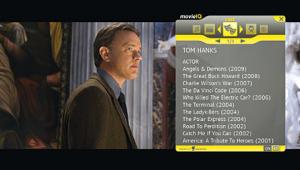Sound Matters: High Definition Audio For High Defintion Video Page 2
Dolby TrueHD doesn’t have a core track. Even if the disc’s menu only lists Dolby TrueHD, you can be sure that a lossy, shadow Dolby Digital track is also on the disc. Because conventional Dolby Digital is so efficient, the extra data space that such a track requires is relatively small. On DVD, Dolby Digital was recorded at either 384 kilobits per second or 448 kbps. On Blu-ray it can offer up to 640 kbps, should the content provider choose to go that high.
The bottom line is that discs encoded with either format are backwards-compatible to standard lossy Dolby Digital or DTS if your equipment cannot decode either of the step-up, high-resolution lossless formats.
Two other new lossy audio formats also emerged at about the same time as Dolby TrueHD and DTS-HD Master Audio: Dolby Digital Plus and DTS-HD High Resolution Audio. While these have been used in other applications (Dolby Digital Plus on the now-defunct HD DVD format), their appearance on Blu-ray so far has been rare.

It’s important to note that whether it’s lossy or lossless, we’re dealing with data compression in all of these formats. This is in no way the same thing as dynamic range compression. The latter pulls down loudness peaks and/or brings up quieter moments. It usually does this for specific reasons—sometimes justified (late-night listening at home) and sometimes not so much (heavily compressed music mastering, to make everything sound louder). With bit-for-bit recovery, lossless data compression preserves the source material’s entire dynamic range.
How Can I Hear Them?
None of these lossless formats—uncompressed PCM, Dolby TrueHD, or DTS-HD Master Audio—can pass from your Blu-ray player to your A/V receiver over a conventional S/PDIF (Sony/Philips Digital Interconnect Format) connection. S/PDIF is the digital coaxial or Toslink optical connection that has been a fixture in all DVD players, Blu-ray players, set-top boxes, A/V receivers, and surround processors since Harry met Sally. An S/PDIF link works fine for lossy multichannel Dolby Digital and DTS, as well as two-channel PCM from sources like CD. However, it can’t pass the new lossless formats we’re discussing.
DTS-HD Master Audio and Dolby TrueHD can pass from a Blu-ray player (the only source that offers them at present) to your AVR or surround processor in one of three ways:
• Your player has multichannel analog outputs, and your A/V receiver or surround processor has multichannel analog inputs. In this case, the player decodes the audio on the disc into multichannel analog audio. Connect the player to the AVR via six analog audio leads, one for each of the 5.1 channels, or eight leads for 7.1 channels if your system is so configured. You’ll also need a separate video connection. With this arrangement, the player sets the speaker configuration, bass management, and the channel levels and delays. However, an AVR’s multichannel analog inputs typically bypass features that require digital processing, such as equalization, room correction, advanced dynamic range compression and leveling.
• Your A/V receiver can decode DTS-HD Master Audio and Dolby TrueHD over HDMI, and you want a simple and high-performance option. Set the player’s digital audio output to bitstream. The soundtrack and video will pass in its native bitstream form to the A/V receiver over a single HDMI connection (HDMI 1.3 or later is required for bitstream transmission). The AVR or surround processor performs the decoding. You can set the speaker configuration, bass management, channel levels, delays, and any other needed or desired processing in the AVR. This option (as well as the one below) eliminates the jungle of analog audio and video cables required in the above analog configuration. The setup options in the AVR are also nearly always more flexible than those that the player offers.
• Your AVR can’t decode DTS-HD Master Audio and/or Dolby TrueHD, but it can accept multichannel PCM over HDMI, and you want a simple, high-performance option. Set the player’s HDMI audio output to PCM. The player decodes either the DTS-HD Master Audio or Dolby TrueHD into PCM, which it then passes to the AVR over a single HDMI link along with the video (HDMI 1.1 or higher is sufficient for multichannel PCM audio). The AVR performs your chosen speaker configuration, bass management, channel levels, delays, and any other needed or desired processing. (Note that you can also use this option even if the AVR can decode the new formats—see below.)
- Log in or register to post comments
























































